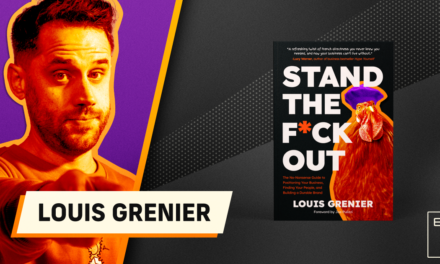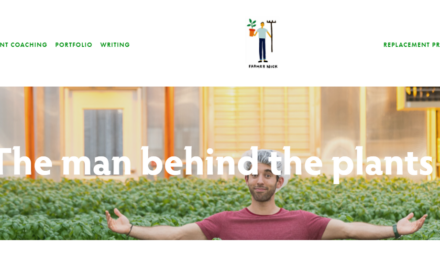It feels like the lights are dimming on discovery.
If you’ve been creating content for any length of time, you’ve probably noticed it. Search traffic is softening. Social reach is down. Recommendation engines are narrowing. And quietly, AI systems are learning from everything we’ve already made, using it to train their own engines. Those same systems are now creating synthetic versions of the content we once used to stand out.
In other words, the game is changing. Fast.
In a few short years, it’s likely that audiences won’t find us the way they do today. They’ll get their information, ideas, and entertainment directly from AI engines that summarize, remix, and recommend what they believe to be the “best” or most “trustworthy” sources on any topic. Which means that if you’re not positioned in those ecosystems as a credible authority, in text form, you may simply not exist in that future.
That’s the urgency behind what I call a strategic text strategy. And it started with a recent conversation I had with my friend Jordache Johnson, one of the sharpest AI strategists I know.
Where the Idea Came From
Jordache and I were talking about my Content Inc. podcast, and he asked a simple question that completely reframed how I think about discoverability.
He said, “What would happen if we treated every podcast episode as a data asset…not just audio content?”
This should have been an obvious question, but I never thought about the podcast more than, well, a podcast.
But in an AI-driven world, text is the connective tissue. It’s what models read, interpret, and index to understand authority. Audio and video are valuable, but the systems that determine visibility, from Google to OpenAI to Anthropic, don’t “hear” or “watch.” They read. Which means that if your content isn’t represented in high-quality, structured text, you’re invisible to the next generation of discovery.
So the question became: how do we strategically distribute that text in ways that reinforce expertise, across multiple credible sites, while we still can?
Step One: Publish Every Transcript
Let’s start with the simplest move. If you’re doing a podcast or video series, make sure every single episode has a full transcript. Publish it on your site, and make it available.
This isn’t about accessibility alone (though that’s a good reason too). It’s about creating a text-based map of your thinking…one that AI can understand, reference, and attribute back to you.
It still surprises me how many creators skip this step (yes, I’m guilty of this as well). They’ll upload video or audio to YouTube, Spotify, or Apple, but never post the full text version. That’s like writing a book and never releasing the eBook or searchable version online. You’re leaving massive visibility on the table.
Step Two: Repurpose Your Text into Credible Channels
Once you’ve got transcripts, don’t let them sit idle on your site. The next move is to distribute that text strategically across credible, independent platforms that already have trust and visibility.
Here are a few examples we discussed:
- Substack or Medium: Create topical series from your existing podcast archives. For example, if your show has 20 episodes on building audience, collect them into a Substack mini-series with summaries, links, and quotes. Each post links back to your main site and podcast, creating a web of authority.
- Association or industry sites: Many associations and niche media outlets are hungry for expert content. Reach out to see if you can syndicate or co-publish summaries or “AI-ready” versions of your work.
- Sponsor and partner content feeds: If you have sponsors, see if they have blogs or knowledge hubs where you can contribute. The goal is to place your ideas where your audience already spends time AND where AI engines are already crawling.
Think of this as your distributed text ecosystem. Every placement reinforces your position as a known source on your topic. When AI tools look across the web for trusted text on “content entrepreneurship” or “audience building,” they see your name (in this case, my name) again and again.
Step Three: Build Text Authority Before It’s Too Late
We’re in a brief window of opportunity, maybe a couple of years, where creators can still influence how they’ll be seen (or not seen) by future AI systems. Once those engines fully mature and the training pipelines stabilize, the hierarchy of “trusted sources” will be largely set.
That’s why now is the time to own your text footprint. Here are a few practical ways I’m thinking about this strategy:
- Audit your archives. Make a list of every major content series you’ve created from podcasts, videos, and webinars and note whether a transcript exists and where it’s published.
- Centralize and republish. Create a “text library” on your site that houses all your thought leadership in one searchable place.
- Expand your surface area. Publish summaries, guest posts, or derivative pieces on multiple credible domains.
- Use structured metadata. Make sure each piece includes clear bylines, consistent author bios, and links between platforms. That’s what AI models use to verify identity and expertise.
- Collaborate intentionally. Get your content mentioned or co-published by peers, associations, or media partners. In the world of AI discovery, citations are the new backlinks.
The Future Belongs to the Indexed
I’m not saying we should stop making videos or audio. Those will always matter for audience engagement and storytelling. But if we want to be found in the next era of AI discovery, text is the foundation.
Your voice, your ideas, your frameworks…they all need to exist in structured, readable, sharable text. Because that’s what the machines will learn from. And that’s what the humans who still care about authenticity will find.
We’re standing at the edge of the last great discovery shift. Those who treat text as a strategic asset will shape what the future finds.
About the author
Joe Pulizzi is founder of multiple startups including The Tilt and is the bestselling author of ten books including Content Inc. and Epic Content Marketing, which was named a “Must-Read Business Book” by Fortune Magazine. His latest book is Burn the Playbook: Are You Made for More? Build a Life on Your Terms.











